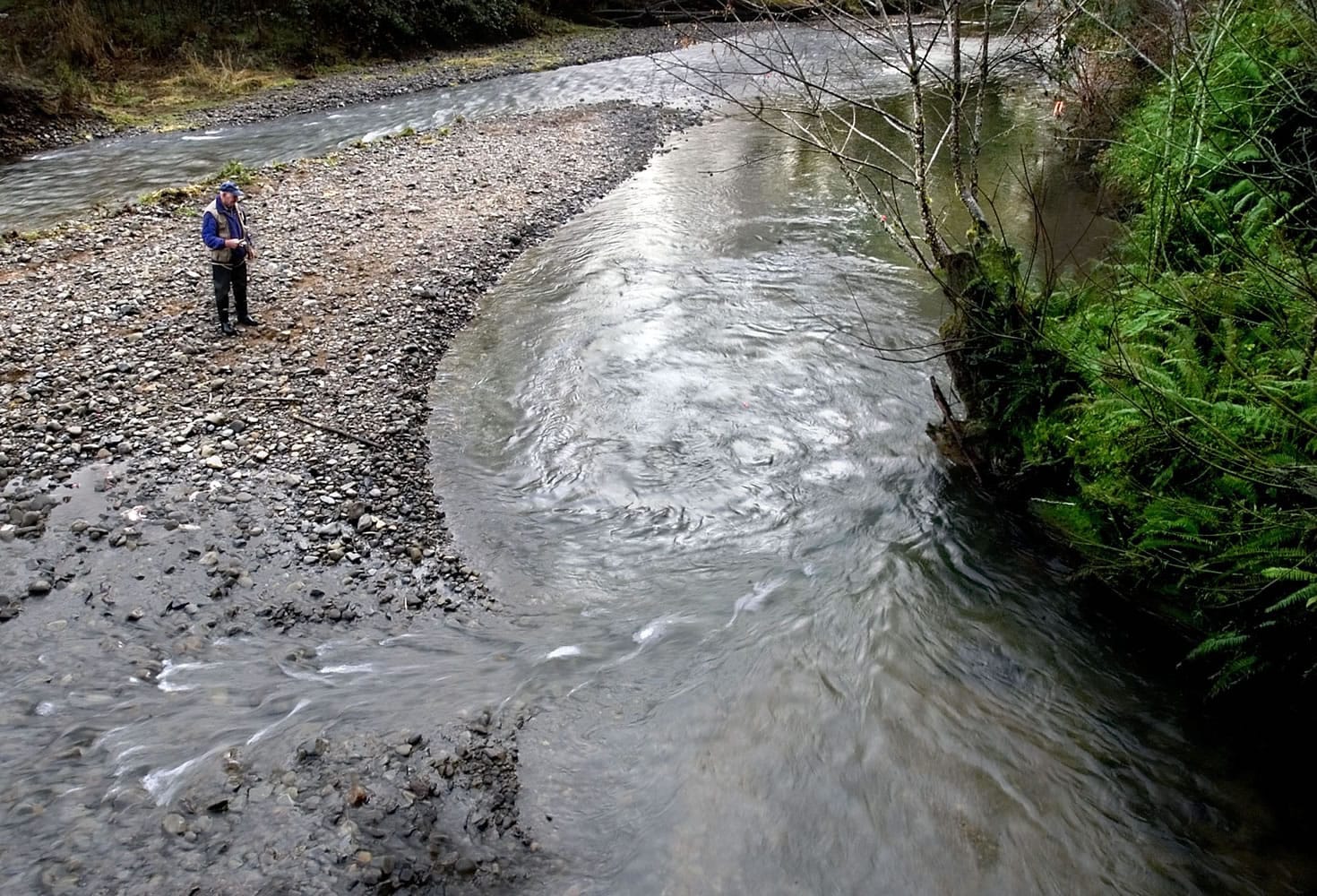The Grays provides far more fishing than Mill/Abernathy/Germany. In 2010-11, anglers reported catching 705 winter steelhead on the Grays River, more than double the 310 caught in Mill/Abernathy/Germany.
The Grays draws anglers from afar, said Dan Dettman of Longview.
“I run into anglers from Seattle and Eugene fishing here,” he said.
When a slide blocked access to the Grays recently, more people showed up fishing the banks of the Naselle River, Dettman said. “All these people don’t quit fishing,” he said. “They go someplace else. Some people don’t mind combat fishing, but I do.”
Another advantage of fishing the Grays is that it’s big enough to use a drift boat, Dettman said.
Mill, Abernathy and Germany creeks attract local anglers, he said.
Steve Gacke of Naselle agreed that making the Grays a gene bank would shift fishing to the already crowded Naselle River. “Right now, the Naselle is overrun with fishermen,” he said.
A problem with excess sediment in the Grays could force the issue. WDFW plans to close the hatchery because it can’t keep up with dredging the outfall, said Eric Kinne, statewide WDFW hatchery manager.
“It’s definitely going to happen,” Kinne said. “Its days are numbered.”
The agency plans to move production from the Grays to the Beaver Creek hatchery on the Elochoman River. In addition to winter steelhead, the Grays River hatchery produces coho for the Deep River, spring chinook for Cathlamet Channel and chum.
Chris Vandenberg, who was a member of the citizen group studying the issue, said he favors making the Grays a gene bank so that a research project at the federal Abernathy Fish Technology Center can continue. Vandenberg, a former Skamokawa resident who now lives in Chehalis, said that research on how hatchery fish and wild fish interact is critical and can be used to fight lawsuits against hatchery fish production.
Bryce Glaser of the Department of Fish and Wildlife said Abernathy couldn’t become a gene bank until the research project there ended, and it’s unclear when that will happen.
Cindy LeFleur, WDFW regional fish manager, said there’s no schedule for when WDFW will decide whether to designate the Grays or Mill/Abernathy/Germany as gene banks.
Meanwhile, anglers can continue to fish there. For now, “we’re not proposing to close fishing anywhere in the gene bank,” Glaser said.
Anglers would still be allowed to catch salmon from other rivers that stray into the Grays, Glaser said.




